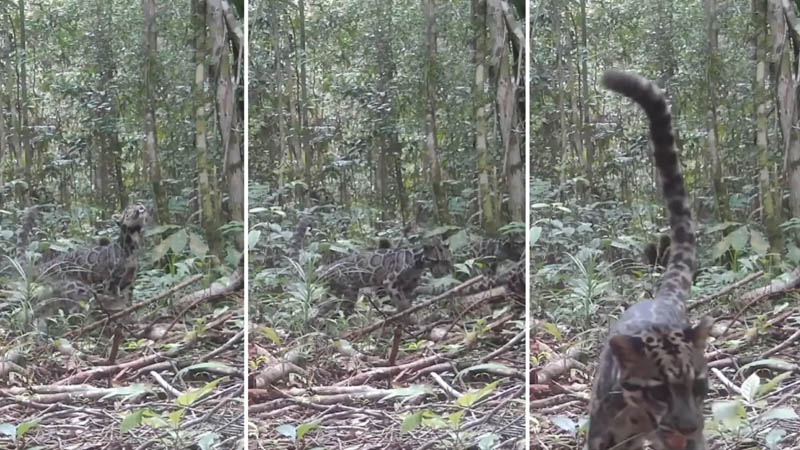Deep within the lush forests of Borneo, a groundbreaking sighting has brought renewed hope to conservationists working to protect the vulnerable clouded leopard. In April, the Orangutan Foundation, in collaboration with Tanjung Puting National Park, captured extraordinary footage of a mother-clouded leopard and her two cubs navigating through the dense underbrush. One of the cubs even paused to curiously inspect the trail camera, providing a rare and intimate glimpse into their world.
The Bornean clouded leopard, listed on the International Union for Conservation of Nature (IUCN) Red List of Threatened Species, faces numerous challenges that threaten its survival. One significant issue is its low recruitment rate. Few adults reach the stage of producing and raising offspring until they are about two years old, at which point they can join the breeding population. This slow reproduction cycle exacerbates the species’ vulnerability.
Deforestation poses another severe threat to these elusive cats, as they depend heavily on forest habitats for their survival. According to the Orangutan Foundation, over two-thirds of the clouded leopard population has been lost in recent years due to habitat destruction. However, the recent footage of a mother and her two cubs marks the first recorded instance of such a sighting, signaling potential positive developments for the species’ future.
“For the population to be reproducing is an incredibly encouraging sign,” the foundation emphasized in a news release. This footage not only offers hope but also highlights the critical role of trail cameras in wildlife conservation efforts. These devices are essential for researchers and scientists, providing vital data on species diversity and distribution. In addition to studying animal behavior, trail cameras have proven effective in anti-poaching efforts.
Clouded leopards are easily recognizable by their striking features, including long tails that match the length of their bodies and impressive canine teeth that can grow up to 2 inches long, the longest of any feline species, according to the Felidae Conservation Fund. These big cats are skilled hunters, preying on a variety of animals such as monkeys, deer, pigs, birds, and reptiles. Current population estimates range from 5,000 to 11,000 individuals in Borneo and 3,000 to 7,000 in Sumatra.
The recent sighting underscores the importance of continuous monitoring and conservation efforts. As seen with a similar trail camera capture in Nigeria, which recorded a pair of the rarest apes in the world, these tools are invaluable in the fight to protect endangered species. In other parts of Indonesia, conservationists are also striving to save the critically endangered Sumatran rhino, with fewer than 50 individuals remaining.
“The clouded leopard is an arboreal species and an excellent hunter on the ground that plays an important role in maintaining the ecosystem,” stated A. Yoga Perdana, research manager at the Orangutan Foundation. “As one of the rarest species to find, being able to see a female and cubs gives us evidence that they are healthy and actively breeding.”
This encouraging development serves as a reminder of the delicate balance within ecosystems and the ongoing efforts required to preserve our planet’s biodiversity.



